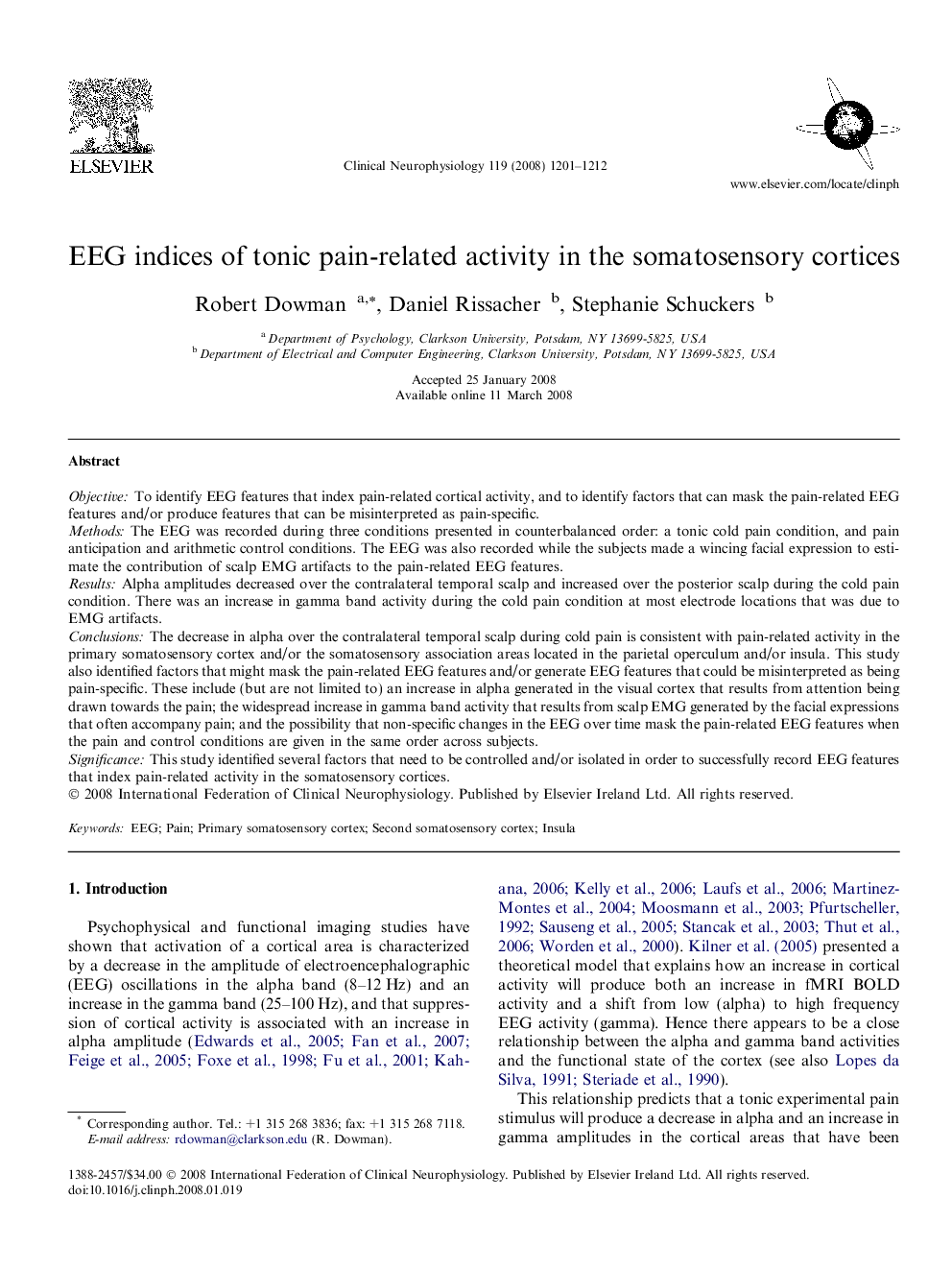| Article ID | Journal | Published Year | Pages | File Type |
|---|---|---|---|---|
| 3047609 | Clinical Neurophysiology | 2008 | 12 Pages |
ObjectiveTo identify EEG features that index pain-related cortical activity, and to identify factors that can mask the pain-related EEG features and/or produce features that can be misinterpreted as pain-specific.MethodsThe EEG was recorded during three conditions presented in counterbalanced order: a tonic cold pain condition, and pain anticipation and arithmetic control conditions. The EEG was also recorded while the subjects made a wincing facial expression to estimate the contribution of scalp EMG artifacts to the pain-related EEG features.ResultsAlpha amplitudes decreased over the contralateral temporal scalp and increased over the posterior scalp during the cold pain condition. There was an increase in gamma band activity during the cold pain condition at most electrode locations that was due to EMG artifacts.ConclusionsThe decrease in alpha over the contralateral temporal scalp during cold pain is consistent with pain-related activity in the primary somatosensory cortex and/or the somatosensory association areas located in the parietal operculum and/or insula. This study also identified factors that might mask the pain-related EEG features and/or generate EEG features that could be misinterpreted as being pain-specific. These include (but are not limited to) an increase in alpha generated in the visual cortex that results from attention being drawn towards the pain; the widespread increase in gamma band activity that results from scalp EMG generated by the facial expressions that often accompany pain; and the possibility that non-specific changes in the EEG over time mask the pain-related EEG features when the pain and control conditions are given in the same order across subjects.SignificanceThis study identified several factors that need to be controlled and/or isolated in order to successfully record EEG features that index pain-related activity in the somatosensory cortices.
